The following Articles and Images have been added to the database
When I was six I took piano lessons from a stern no-nonsense teacher. She wore her hair in a bun, and sat in a straight-back chair next to the piano in reach of my little hands that quivered over the keys. I willed them to hit the right notes: CDE, CDE, DCDE, CC. “Here we go, up a row, to a birthday party”. She was indeed “Teaching Little Fingers to Play”, which was the compendium we used, but I was scared to death of her and her ruler. “NO” became an operative word, no matter how I concentrated on making her happy.
I learned scales, chords, and these little pieces, the lyrics of which stick in my head to this day. But it was hard. It was hard to practice; it was hard to make two hands play different things at the same time. My mother gritted her teeth and sat with me as I tortured out simple songs, telling me I was improving. She probably crossed her fingers as she said that.
When my sister took up the piano a few years later, she was a natural — confident, clever, and, I might add, someone who could stand up to the teacher if she had to make a point. She went on to play in recitals (something I never mastered), and festivals (the very bane of my existence). In later years, she took up the guitar, the flute, and the organ.
I left my piano days behind, but the memory of music literacy stuck in my head, a blessing when I joined choirs. The ability to read music is like riding a bike, I guess.
A while back, I toyed with the idea of taking up the piano again, not that we even have one. However, a serendipitous conversation led to the loan of a keyboard, just the right size, and a pile of easy piano lessons. The first page I opened looked simple enough: two hands, no chords, the basic key of C. What a joke! Not only would my fingers not play the proper notes, but also I couldn’t make my two hands work together properly. I couldn’t even read the two lines at the same time. I was back on that piano stool, feeling like a six-year old again.
I had to return to the beginning, one hand at a time, five-finger exercises, over and over. For a couple of days, all I did were scales, up and down, white keys, black keys, left hand, right hand, and then wonder of wonders: both hands together! I didn’t allow myself to make a mistake, but instead repeated the exercises until I’m sure Alan figured that would be my entire repertoire forever. I didn’t scream when I got it wrong, I didn’t start crying when I’d been sitting there twenty minutes, I didn’t slam the book shut and yell it was all stupid! (Am I a grown up now?)
I have dutifully practiced every day for at least thirty minutes, reminding myself a few times that you don’t learn to play the piano by watching Wheel of Fortune. I can now play the simple pieces, and am moving into Book Two where I’ll have to play two-hands, different rhythms, and chords. It’s going to be a big challenge, but I’m ready.
I’m even working on some theory lessons to discover why some notes sound better than others, how to find the right chords to accompany a tune, how to work out the formula for a scale. I must have lost my theory book when I was six because this has been a big mystery to me up to now. For the first time, I’ve solved the quandary of dominant fifths and sevenths, a real eye-opener that won’t ever come up on Jeopardy, I’m sure. And here’s something to think about: if you look at a lot of the Afro-American spirituals, you will find they can be played entirely on the black keys. That’s piano theory at work there.
This “old dog, new tricks’ thing is pretty satisfying, especially when I don’t have to answer to anyone. It’s also teaching me patience, something I could really use. Learning anything new takes time, and it doesn’t matter if the first attempts are less than perfect, as long as every attempt moves me a little farther to the right side of the equation. Hope springs eternal that the day will come when all the stars will align and all the attempts will pay off into something half-decent. My agility shirt says: “Sometimes we learn, sometimes we win, and when we learn to win, we’re going to rock!” It may happen, or it may not, but I’m having a good time trying.
Now I want to buy my own keyboard, not a fancy thing with a hundred tunes, drum beats, and all that — I’m not starting a rock band or anything — just something that sounds piano-ish and is in tune, and maybe with a few more than 61 keys, and I’d like Middle C to actually be in the middle. If I were to go that far, it would mean a real commitment, and I’ll work myself up to the Mozart Sonatina my sister used to belt out at a furious speed just to unnerve Mrs. Tweedale, may she rest in peace for putting up with this ninny of a six-year-old pupil.
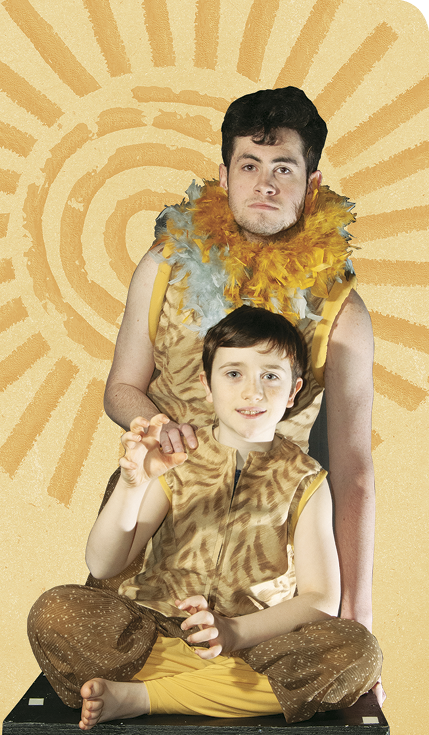
Once again, the Mississippi Mudds Youth Theatre group is in the final stages of rehearsals for another wonderful show — this time its production of The Lion King Junior. With seven shows scheduled at the Town Hall in Carleton Place (from February 22 through to March 3), this delightful story brings the African savannah to life on stage.
Join this unforgettable young cast of characters while the plot builds as they journey from Pride Rock to the jungle and back again. Filled with music and a plot that will pull at your heartstrings, this show tells the story of a young lion named Simba who is forced to grow up quickly after the great loss of his father Mufasa. He faces his evil uncle Scar, and finds himself on a journey of self-reflection and growth. Meeting friends who help support him along the way, Simba finds himself back with his tribe where he belongs, but not without having to overcome his sense of loss, guilt and fears first.
This family-friendly show is sure to have your toes tapping to some fantastic music and songs (by the award-winning team of Elton John and Tim Rice), and you will be sure to share some giggles along the way. The Mississippi Mudds Youth Theatre group never disappoints — from costumes, make-up, lighting and sound to the amazing set design, one never walks away from these performances without feeling a sense of pride in our local youth and volunteers who bring theatre to life in our community. For show times and to buy tickets, go online at <ticketsplease.ca/TheMudds>. Get yours today!
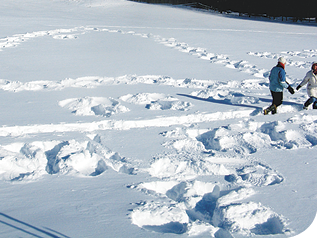
I am thrilled to say that we are celebrating the 9th Annual Snow Angel Making Party at Highlands Gate (4381 Wolf Grove Road, Lanark Highlands, Ontario) on Sunday February 17 from 1–4pm, and everyone is invited!
Over these past nine years I have done extensive, non-scientific research on the benefits of making snow angels and I have come to these conclusions:
If you can get down and, even better, get up after making one, you can be grateful for your good health.
If you make your angel on the side of a hill, it is easier to get up and you won’t feel as old as you are.
If your courage has encouraged others to make a snow angel, you are spreading joy.
Making snow angels with others increases the benefits exponentially.
If you are able to drop down and make one when you are out walking with friends, you show vulnerability, courage and a zest for life.
If you a try different range of motion when creating your impression, you show creativity and curiosity, which is good for the soul.
What I find most delightful, after flailing about, is actually lying very still in the snow and gazing up at whatever the sky has to offer that day and feeling the cold seep into my back and how the earth supports me so fully. I feel connected, grounded, grateful and still.
So, Ray and I would like to invite you to experience any or all of the above and make your own observations to add to the list. This is a fun party that is open to everyone who wants to fall backwards in the snow to make works of art. There is no cost, it is not a fundraiser for anything, it is just an open party to enjoy. There is a play structure with a curly slide, horses to feed carrots to, sliding hills and 85 acres of fields and forest to snowshoe and cross-country ski. There will be a campfire, a log refuge to warm up in, hot cider and good cheer and you are welcome to bring a treat to share. Dress for the weather and wear a coat with a hood so you don’t get snow down your neck when you are creating your angels. We are the second laneway on the left after the flashing yellow light in Middleville, 21km from the Esso Station in Almonte.
Look for the 2nd laneway on your left after the flashing yellow light in Middleville, 4381 Wolf Grove Road, Lanark.
Although it has not been that long since we all either listened to or sang our hearts out to Christmas carols, it is already time for some more music!
For the past several years, during this mid-winter period, the Kanata Choral Society has presented concerts in which they could poke gentle fun at songs and/or sing songs from their childhoods, as opposed to the more classical repertoire the choir is known for. This type of event is going to happen again on Saturday, March 2, when the choir will perform some well-known folk songs and other tunes made famous by the King Singers. The concert is aptly named: Musical Fun for the Whole Family.
This concert will also feature the McLeish Five — a group of talented siblings from the Ottawa Valley who sing and compose their own music. Individually they have extensive musical experience, singing in choirs, coffee houses and musicals. They will perform some of their own compositions.
The MC is Mike McCormick, a musician, composer, guitarist and one of the founding members of The Arrogant Worms. Mike is well-known in the area, and those who know him will realize that this is going to be an afternoon full of laughter and fun.
The performance will be held at St. Paul’s Anglican Church (20 Young Road in Kanata) at 3pm, and there will be a reception afterwards where the audience may meet the singers. Tickets will be available at the door or online at <kanatachoralsociety.ca>. Admission is $18 in advance or $20 at the door for adults, $15 for seniors, and $10 for students 13 and over. Children 12 and under are admitted free of charge.

Deputy Mayor John Levi passed away on Sunday, January 13, in Florida with his beloved wife Helen by his side. So many of us were shocked and saddened by John’s untimely passing.
John has been a pillar of the community for decades as a prominent business owner, philanthropist, volunteer and member of Council. He grew a small hardware store on Mill Street into the thriving enterprise it is today, providing local employment and drawing customers from around the Valley and Ottawa to shop specifically at Levi’s Home Hardware.
As a community builder, John was a long time and dedicated member of the Civitan Club and the Almonte Masonic Lodge, and was for years a member of the Almonte Chamber of Commerce.
As a coach, he worked with his three girls in ringette, taking them to provincial championships, the Ontario Winter Games, and to international competition in Finland. For his leadership, John was inducted into the Ontario Ringette Hall of Fame.
Prior to being elected as Deputy Mayor in the 2018 election, John served as Mayor during the 2010-2014 term and represented both Pakenham and Almonte Wards as a Councillor. Deputy Mayor Levi’s love for Mississippi Mills, support of his community and his experience around the Council table will be missed.

Mount Pakenham Adaptive Ski Program
Serving the west end of Ottawa and Lanark County, the Adaptive Ski Program at Mount Pakenham provides the opportunity for children, youth and adults with disabilities and special needs (both physical and intellectual) to learn to ski through lessons taught by trained volunteers and certified instructors. We are grateful for the generosity of Mount Pakenham owners and management, as well as the dedicated volunteers, all of whom make this program possible.
We are seeking volunteers to provide assistance to our program participants. If you are at least an intermediate skier, and have your own equipment/ transportation, we will train you in techniques to assist disabled skiers. We will provide you with free lift tickets when you ski with the program and support from certified instructors, including group ski improvement sessions. Volunteer for as little as one lesson per week, daytime or evening. Those with CSIA certification are especially needed, even if it’s not current.
Not a skier? Not a problem! We could still use your help with tasks such as newsletter preparation, special events (Skill-A-Thon and year-end party), and fundraising.
For details, contact Program Coordinator Dave Hoffman at <director@cads.pakenham.org>.
CADS at Calabogie
Welcome to CADS at Calabogie, where we are excited about adaptive skiing and snowboarding and look forward to meeting you. CADS stands for Canadian Association of Disabled Skiing, but we like to think of ourselves as an Adaptive Ski Centre of Excellence.
Our mission is to be safe, to have fun on the snow, and to provide an excellent learning experience. We run a seven-week teaching session on Sundays from the Centre of Excellence at Calabogie Peaks. We pair our students/athletes with instructors, and they have an outstanding time together exploring how to develop their skills out on the hill.
Each year we provide two days of training for new and returning instructors. We work on supporting our instructors so that they are comfortable working with their students. We also pair instructors so that they have the benefit of an experienced teacher with them to gain insight on how to handle adaptive skiing experiences.
We offer a tethering program for both stand-up and sit-ski instructors, and bring in additional instructors from surrounding areas and programs. We have had excellent results partnering with the 3-Track programs from Southern Ontario.
CADS offers specific training that fits the needs of the program and certification levels, all of which provides expertise in teaching techniques and strengthens skill levels and confidence. This training is linked to the CSIA methodology and is a blend of teaching skills. We also support the obtainment of CSIA levels of teaching and encourage our instructors to obtain certification in either or both methods.
So do you think you want to have fun this winter? Email Deb Blimkie at <director@calabogiecads.ca> to find out more!
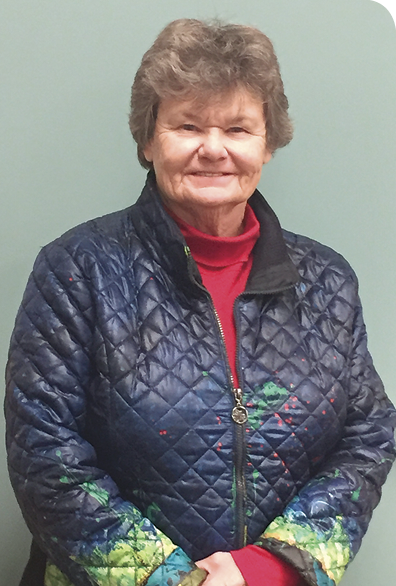
On February 2, Mary Lou Souter, Chair of the Mississippi Mills Public Library Board, will be in Toronto to accept the Ontario Library Association’s (OLA) President’s Award for Exceptional Achievement.
According to the Ontario Library Association, the President’s Award, “acknowledges an outstanding action or contribution that has in a major or unique way enhanced or furthered librarianship in Ontario.” Recipients are chosen at the full discretion of the President of the OLA. Current President Kerry Badgley explains his choice: “I believe that the award is a fitting way in which to acknowledge Mary Lou’s long and meaningful contributions to Ontario public libraries, especially the Mississippi Mills Public Library.”
Having served the Mississippi Mills Public Library for close to thirty years, “Mary Lou has earned this award many times over,” claims Monica Blackburn, Mississippi Mills Public Library Manager of Branch Services.
This award has a long list of impressive recipients. For example, Dr. Guy Berthiaume, the Librarian and Archivist of Canada, was the 2018 recipient of the President’s Award. “Mary Lou is following the Librarian and Archivist of Canada! This is truly putting Mississippi Mills Public Library on the map,” states Christine Row, CEO/Chief Librarian of the Mississippi Mills Public Library.
Library staff and board members will be in Toronto to celebrate this achievement.

A very wise and witty play is coming to Studio Theatre Perth this month.
Alone Again Together, by playwright Lawrence Roman, is the honest and funny story of an empty-nester couple whose nest refuses to stay empty, leaving them in a chronic state of parenthood.
Helena and George Butler’s adult sons have finally moved out, and husband and wife are both looking forward to the next phase of their lives together. Anticipating leisure and privacy, Helena has set new professional goals for herself, and George is on board and supportive. But their oasis of peace and quiet is quickly interrupted when elderly parents come to stay, bringing unique new problems and predicaments.
Alone Together Again mixes comedy with pathos; light-hearted conversations unexpectedly detour to reveal deeper layers of truth and frustration. Helena and George’s relationship is tested by the needs of their extended family, who face new struggles with aging and trying to stay relevant in a rapidly changing world.Director Grey Masson felt the brisk and dialogue-driven play was an ideal piece for the directorial début of his first full-length production. “There’s a lot here,” he says. “I think people will recognize the situations, recognize the characters. It’s funny, it’s touching. And it’s got its moments of drama.”
Masson brings to this show many years of theatre experience, formerly with The Prior Players, and also a decade at Studio Theatre Perth. He is joined by a seasoned and accomplished cast, who have appeared in countless theatrical performances across the Ottawa Valley and beyond.
Veteran actress Joanna McAuley-Treffers (with 30+ local shows to her name) is the conflicted Helena, torn between new ambitions and family responsibilities. Jeff Wilson, a performer with Full Circle and the Perth Community Choir, makes his Studio Theatre début playing her husband George, who soon realizes that being “alone together again” may not be as harmonious as he had hoped.
The cast also includes Craig Young (a performer for many years with Quebec’s Pontiac Community Players) and Loretta DiEugenio (with a lifelong background in theatre) as Helena’s quirky and quarrelling parents. Deb Ward, a familiar favourite at Studio Theatre, adds her talent as George’s mother Grace.
When asked what the audience can relate to in this play, Studio Theatre alumna Joanna McAuley-Treffers immediately replied: “everything!” She adds: “it’s less common that the parents would be coming back to inundate the empty nest, but all the emotions and relationship issues are going to resonate with everybody.”
Alone Together Again opens at the Studio Theatre Perth on Thursday, February 21 at 7:30pm for seven shows: February 21, 22, 23, March 1 & 2 at 7:30pm and February 24 and March 3 at 2pm. Be sure to book your tickets in advance! Advance tickets are $24 exclusively at Tickets Please in the Matheson House Museum Visitor Centre, 11 Gore St. E. (485–6434, ticketsplease.ca) which accepts in-store, phone, online and credit card purchases. Tickets are $24 at the Studio Theatre box office on show nights, subject to availability. Rush tickets for students with ID are just $10 at the door, subject to availability. Attend opening night and save $5!
In the spirit of classic family “dramedies,” Alone Together Again is a window into the dynamics of marriage, parental relationships and responsibilities. Truly, the themes of this play will ring true with many audiences. Don’t miss it!

Art… and Soul
theHumm is celebrating this awards season by commending Almonte’s beloved and esteemed Don Wiles for his interest in his community and the contributions he continues to make that enrich its cultural and intellectual life.
Journalists should never miss a chance to invite a nonagenarian to share their most treasured piece of advice. Soon to be 94, Dr. Wiles was momentarily surprised at my invitation, and then counseled, “Be interested.” He is a persuasive example of the wisdom of his words.
Wiles is a life-long scientist. Whether it’s music or woodworking or radiation or sailing or piloting or solid state hot atom chemistry, he is interested — interested enough to earn a Ph.D. in Nuclear Chemistry in 1953 from M.I.T., and interested enough to learn multiple languages and visit 39 countries with “more yet to come.” As a result of his complementary interests in his community and in life-long learning, he instigated the popular Learning in Almonte Lecture series and the companion Almonte Lecture series, both described in further detail below.
Born in Truro, Nova Scotia, on August 30, 1925, Don remains a true Maritimer at heart, with deep ancestral roots reaching back to 1750 that prompted his interest in genealogy. His mother was a teacher, and Don was teaching woodworking (he was self-taught) to junior high school students while earning his B.Sc. in Chemistry at Mount Allison University, followed by his B.Ed. in 1947. After earning his M.Sc. in Chemistry at McMaster University in 1950, he met his wife Billy at the M.I.T. Sailing Club while pursuing his Ph.D. They have been married almost 67 years, and Billy volunteered that one of the enduring attractions is: “we both like doing things.” Their first child was born in Oslo where Don was continuing his studies, and Billy learned Norwegian as she navigated the challenges of motherhood.
Two years later they were back in Vancouver as Don began his academic career as a Research Associate at UBC, and in 1959 they brought their three children to Ottawa where he began his ongoing affiliation with Carleton University. After becoming an expert in nuclear chemistry and radioactivity, he served as chair of Carleton’s Chemistry Department for eight years. In 2011 Carleton awarded Wiles the honorary degree of Professor Emeritus; DLL (honoris causa) “in recognition of distinguished contribution to scholarship and service to Carleton University.”
Just this past May, Wiles received the CURAC (College and University Retirees Associations of Canada) 2018 Tribute award. The honour is in recognition of Don’s initiative in founding Carleton University’s Retirees Association in 2006 to provide all retired employees with a social and organizational connection to the University and each other. He served as the organization’s first president until 2012.
I Think, Therefore I Teach
Wiles continues to pursue knowledge about the natural world using his extensive formal training as a scientist, but more importantly at this stage of his life, Wiles continues to be an educator. After his official retirement at 65, he taught for another twenty years and is still at it. But unlike most people, he doesn’t just teach — he creates educational opportunities and resources. During his academic career his refereed publications numbered in the sixties, he published several books, and he created a course and wrote a textbook on The Chemistry of Art and Artifacts. Many of Canada’s museum technicians have learned about aspects of chemistry relating to art history and archaeology from this text, including the chemical and physical processes leading to the deterioration of materials of historical and cultural importance. Wiles’ persistent sense of humour and his lack of guile are evident in comments interspersed in the text such as, “It is not likely that anything will replace simple common sense as the starting point in identifying an article from the context of its discovery.”
Learning in Almonte
In 2004 he and his friend Reiner Hollbach conceived the Almonte Lecture Series, an annual offering of seven monthly lectures between September and April. Don gave the first lecture, and so many people showed up they had to obtain a larger venue. This year’s January lecture was also presented by Dr. Wiles. Titled “Radiation and Human Health”, Don gave “a summary … of my own exposure to radiation, including my own gamma-ray spectrum.” The program for the wide-ranging and popular series is available at <almontelectures.net/2018-19-lecture-season> and covers topics as diverse as “Women’s Health in Africa” to “Social Enterprises: What are they and why do they matter?”
Wiles was also the catalyst for the sister educational initiative, Learning in Almonte, modeled after Carleton University’s Learning in Retirement series. It offers an eclectic selection of courses for area residents that run for six weeks on either Tuesdays or Thursdays. The current offering is titled “The Psychology of Decision Making.” Instructor Warren Thorngate promises “insight into the factors involved in decision making,” and says the course “may present avenues for achieving good outcomes, be they economic or personal.” Even though the first session took place in January, it might be wise to visit <learninginalmonte.com> to sign up for the remaining five, and check out the upcoming topics.
After many years of tapping into his extensive network of academics, and endless hours of planning and organizing, Don has finally handed over responsibility for the two series to a trio of like-minded community volunteers, but he still attends all the lectures, sitting in his reserved place of honour in the front row — still learning, still interested.
In 2015 Almonte’s Young Awards Foundation bestowed their annual Cultural Achievement Award to Don Wiles in recognition of his outstanding contribution to his community. In 2017 Don was presented with a plaque recognizing the invaluable contribution he has made to the culture of Almonte. Library Board Chair Mary Lou Souter commended Don on the golden legacy he has bestowed on his community, not only for his organization of the Learning in Almonte initiatives, but also for his dedication to their longevity.
This brief account barely skims the surface of the life and legacy of Dr. Donald R. Wiles. It doesn’t give Billy the credit she deserves for running the family farm near Carp before they moved to Almonte. It doesn’t mention the extensive travels during summer holidays that their children finally appreciate. It celebrates a life well lived and the indomitable spirit of a generous man who believes worrying is a waste of time. Congratulations Don.
(More information is available at <carleton.ca/donwiles>).
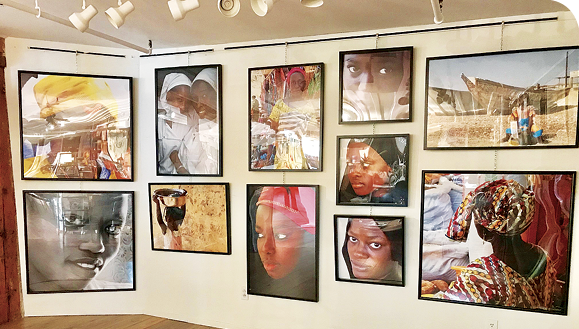
Just over two years ago when Almonte-based photographer Monique Renaud left for Senegal to do some volunteer work with Women’s Global Engagement (FEM – Femmes engagement mondial), she had no idea how the experience would profoundly transform her direction in life and her sense of self. Her decision to travel to Africa and work at the Gîte-École Mbour (Bed and Breakfast school) for young women was in response to an invitation from her friend, Carole Lepage, President of FEM, the organization that rents the premises and operates the school. FEM was founded in April 2016 by Lepage and her friends Sylvie and Chantal Bourbonnais.
The roots of that incredible journey have sprouted far-reaching branches that have touched the lives of African women young and old, and that have culminated in a breathtaking photography exhibit that will be on display in Almonte during Black History Month.
The exhibit and fundraiser for Women’s Global Engagement will kick off in the Centre for Creative Living at 70 Clyde Street (St. Paul’s Church) on February 8 from 6–8pm. Visitors can also view the exhibit on February 9 from 1–4pm, February 10 from noon to 4pm, and for the remainder of the month (Monique will be present during the weekend of February 8–10). The photographs tell a soulful story and provide inspiration for women of all ages, regardless of their path in life.
FEM supports African women aged 16 to 25 in becoming entrepreneurs in areas such as cooking, baking, jewellery design and clothing design. Housed in the B&B school, the organization’s financial support goes directly to student development. The project is sustainable as it will support young women as they grow their businesses and will set them up for success by engaging coaches to help them implement concrete business plans that will be monitored and adjusted to meet their needs over time. To date, this investment-worthy initiative has helped 90 students and has raised $25,000.
A self-taught and intuitive photographer, artist and author, Monique is a seasoned world traveler who has also spent time in India, Nunavut and Central America. The fruits of those adventures include the creation of several books, such as Portrait of an African Woman, which will be available at February’s exhibit; Espiritu de la Creatividad, which she created while living in Costa Rica; India Starts with an I – Inde, la route en Soi, which she co-authored with Almonte photographer Louise Lafleur; and We are in Every Image That we Make, co-authored with her fellow photographers at the Centre for Creative Living’s Contemplative Photography Group, of which the late Alan Mirabelli was a valued mentor.
For Monique, the decision to go to Senegal was a mixture of fate and a lot of faith! After pondering how and where she could use her gifts as a photographer, writer and artist to serve others, something told her to “just go!”
Monique spent over a month of her volunteer journey traveling throughout Senegal, visiting the coast, the desert and the capital city Dhakar and living and working with 39 young women in a tiny village at the B&B school.
“I wanted to tell this story of how our respective journeys were somewhat similar in terms of self-discovery and the potential life offers those who are willing to see, hear, understand, dare to risk, choose, act upon and let go with total trust.”
Instinctively Monique reached for her camera. “I was mindful of the resistance and stigma attached to the lens by people who have all too often experienced an unsavoury aftertaste.” She quickly became known as Monique Click Click. Day by day as she captured the women’s images, their comfort level, trust in each other and friendships grew.
“Portrait of an African Woman is a tribute to African women from birth to wise elders. The images tell a story of dreams, vision, overcoming struggles and accomplishments by using one’s own unique gifts.”
“In Senegal, the girls were blooming and so was I. I promised that I would tell their story so that they would see themselves and know who they truly are, what they are capable of, and continue to believe in themselves and their dreams.”
Monique hopes that her photography exhibit and her book will inspire others to dig deep, volunteer and ask themselves how they can use their gifts to help them grow, wherever they are in life’s journey.
All proceeds from the Almonte exhibit and fundraiser will be donated directly to Women’s Global Engagement for the benefit of the B&B school in Senegal.

Singer/songwriter Claire Hunter now lives in Toronto, but she grew up and went to school in Almonte, where she developed her musical skills playing at coffeehouses and appearing in such ADHS productions as Joseph and the Amazing Technicolour Dreamcoat. Since then she has returned to play a sold-out and very well-received opening slot at the Folkus Concert Series, and to open for the Great Lake Swimmers at the Festival of Small Halls. In February, she will be releasing a new EP and travelling to the Ottawa area to play a couple of shows. On February 7 she will be at Avante-Garde Bar in the Byward market, and on February 8 she will be at Batstone’s Northern Ramble in Renfrew. Her new EP, Something to Give, will be out on February 19 and copies will be available at Mill Street Books in Almonte.
According to Claire, “growing up in Almonte, I was given many opportunities to perform at local events and fundraisers. The arts community in Almonte is very supportive of young artists and played a huge role in my decision to pursue music as a career. I’m thrilled to be returning to the area to play two shows with my band in February.”
Claire’s work has a way of drawing out memories that are often lost or forgotten in the everyday shuffle of life. Her gift for capturing the shared human experience through song is enhanced by the conversational tone of her writing. Each of her songs contains multiple layers, despite having a refreshing, down-to-earth simplicity.
With the support of the Toronto Arts Council in 2016, Claire released her début EP Something Safe, which received radio play across Ontario. She has since played a number of shows in Canada and the US. For more details on the shows or to hear some of Claire’s music, please visit <clairehunter.com>.
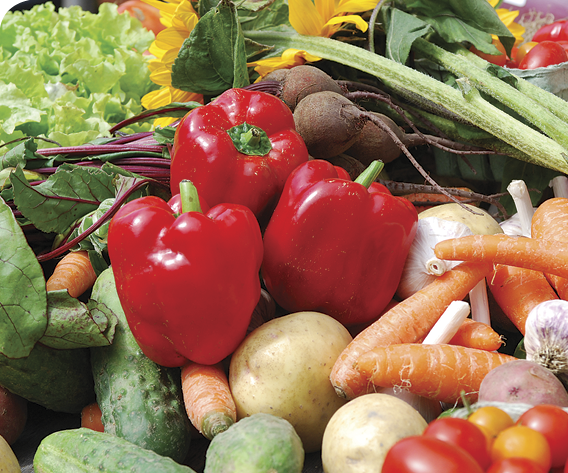

Do the grey winter days have you dreaming about the greens of spring and summer? Why not ensure a steady supply of those greens (as well as lots of other delicious produce) by investing in a local CSA?
CSA stands for Community Shared Agriculture (also known as Community Supported Agriculture), which is essentially a partnership between growers and eaters. By purchasing a CSA “share”, eaters enter an agreement with farmers who then supply them with a season’s worth of vegetables — with a full share usually feeding a family of four.Typically, some or all of the cost of the subscription is paid up front, which helps the farmer with financing for the year. It also provides a secure market, allowing farmers to do what they do best — grow nutritious, great-tasting food. In this area, many farms (such as the ones listed on this page) begin selling CSA shares as early as January, so contact them early to reserve your spot!
The Benefits
One of the advantages of participating in a CSA is that you get to deal directly with the farmer who grew the food. You can ask questions about the growing conditions or find out how to best prepare an unfamiliar vegetable. Knowing what kind of produce you’ll be getting in a given week enables you to plan meals, which is a great way to reduce both wasted food and extra trips to the grocery store.
Supporting small-scale, local farms means voting with your dollars for the option that is easier on the planet than large, mono-crop industrial farms. You will also feel like you’re doing something good for your health and the health of your family. Local growers are proud of what they sell, and their primary goal is to produce vegetables, fruit and meat that taste great and are full of nutrients. You will be dealing with a local expert, someone who spends a good deal of time on the many tasks related to turning soil, sunlight and water into delicious food. The farmers then sustain the local economy by making local purchases, resulting in a win-win situation!
Most CSAs sell outwell before Spring,so call now to book your share!
For more information about local food, farm-gate sales and CSAs, visit
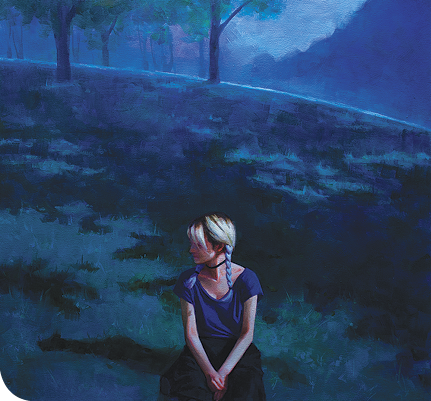
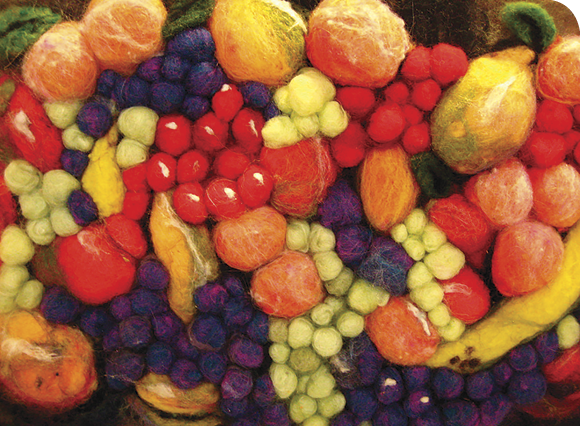
FIGURE in Almonte
From February 8 to March 24, Almonte’s Sivarulrasa Gallery presents FIGURE, a trio show featuring figurative paintings, drawings and sculpture by artists Adrienne Dagg (Edmonton), Caroline Ji (Toronto), and Sue Adams (Almonte).
In her new series of paintings, Adrienne Dagg obscures space and figure. Incorporating mirrors and reflections into works such as Tumble, Reflection, and Figure with Mirror, she presents fractured environments that are divided and warped by mirrors and painted shapes. These divisions are then re-joined to explore new configurations. The works mark a new exploration for this artist, as she deepens her practice in portraiture and narrative figure painting.
Caroline Ji’s paintings are evocative and intimate depictions of people she has met, re-lived conversations, and memories. Bookshelf and E, two of the most recent works, highlight her highly skilled exploration of her subjects’ psychological states. Emotion is palpable in her works, inviting viewers to attach their own narratives to each one. With a striking colour palette and careful attention to lighting choices, mood and atmosphere become the storytellers in her paintings.
Sue Adams explores themes of passion, pain, frailty and grace in her sculptures and drawings. Her newest drawing Cupid depicts an innocent, ethereal being. Atlas and My Blue-Toed God of Love, like her other sculptures, draw inspiration from historical movements in Classicism and Humanism, with her figures often combining outward formality with inner turmoil.
Everyone is invited to the Vernissage/Artists Reception on Saturday, February 16 from 3–6pm. Artists Caroline Ji and Sue Adams will be in attendance. Sivarulrasa Gallery is located at 34 Mill Street in Almonte. For more information, please visit <sivarulrasa.com>.
Richard Hutton & Barb Sohn at MERA
McDonalds Corners Elphin Recreation & Arts (MERA) is proud to display works by Richard Hutton and Barb Sohn for their February Art Exhibition in Dean Hall. A vernissage will be held on Sunday, February 3 from 2–4pm, and everyone is welcome.
Richard Hutton’s art <richardjameshutton.com> is as multi-faceted as the man’s mind. In fact, the depth and breadth of the mind itself, and everything it conjures up in this world, is the constant underlying theme in all his works. The subject matter can be still and re?ective, at other times turbulent or playful, but is always enquiring and often provocative. Richard is accomplished in acrylics, watercolour, drawing and oils, but the latter remains a favourite. He prides himself in not being a slave to any particular style or technique.
Barb Sohn <barbsohnart.ca> works with acrylics on canvas, creating images from local areas such as Murphy’s Point Provincial Park, Lanark County, and from her recent trip to the Yukon. Her work is an ongoing process of discovery — that is, the observation of some aspect of nature that she has noticed and brought to life through her interpretation.
Please visit <meraschoolhouse.org> for more information, directions and hours of operation.
Call for Participants 2019
Are you a practicing artist or artisan interested in joining a dynamic tour? If so, you are invited to apply for the 23rd annual Crown and Pumpkin Studio Tour on Thanksgiving weekend in Almonte, Clayton and area. The 2018 tour was a resounding success as the public responded enthusiastically to the variety and quality of fine art, craft and food and drink.
Organizers are looking to broaden the variety of offerings, and are interested in professional-quality, innovative work. New types of three-dimensional work will receive particular consideration. To apply, submit digital images of recent work, and include a brief biography and artist’s statement. Work is judged on originality of expression, concept, and quality of execution. Applications open April 1 and the deadline for submissions is May 1. Send your application, including photos and a link to your website/Facebook page to <barbara.mullally@gmail.com>. For more information, please call 256–3647.
The Mix by The Six at Strévé Gallery
One of the area’s newest textile art groups, The Six, will be presenting its first group show at the Strévé Gallery from January 29 to March 31, with a vernissage on February 3 from 2–4pm. Six experienced and innovative artists have come together in the past year to share skills, to learn from experimenting, and to support each other in creating and promoting their art. The six members are Meredith Filshie, Nancy Garrard, Garrie Bea Joyce, Rita Rottman, Karen Samanski and Wendo Van Essen. Among other venues, these artists have shown their art as part of the Colour Unboxed show at the Mississippi Valley Textile Museum and at the annual Fibre Fling shows presented by the Out of the Box Fibre Art group.
The artists will also be available on March 3 (2–4pm) to talk about their creative journeys and demonstrate some work in progress. If you plan to attend, please RSVP to <strevedesign@gmail.com> or 267–0230 as seating is limited. The Strévé Gallery is located in the upper level of Strévé Design Studio and Boutique, at 64 Gore St. E. in Perth.
Save the Date for Maple Run!
Mark the weekend of April 6 and 7 for the 17th Annual Pakenham Maple Run Tour. Revel in spectacular spring landscapes while experiencing the art, fine craft and delicious food and drink of 33 exceptional artists, artisans and producers on this self-guided your. The Maple Run Tour wanders through scenic, historic Pakenham village and area to ten fascinating stops, where you can indulge your senses in beautiful painting, pottery, pewter, glass, jewellery, photography, textile art, delicious locally-produced food and drink, and much more. The tour coincides with Maple Weekend, so be sure to visit Fulton’s Sugar Bush and Pancake House too. Brochures are available online, at Fulton’s, the Pakenham General Store, throughout the village and beyond, and at any tour stop. Studios will be open from 10am to 5pm each day.
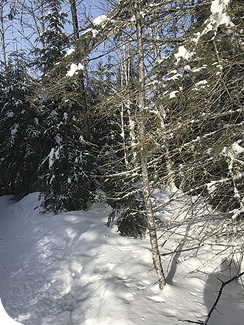
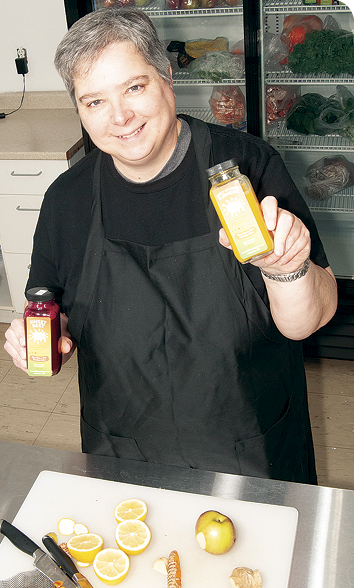
February 18 is Family Day in Ontario, and there are many affordable (and free!) activities to enjoy close to home. In Almonte, Pakenham and area, you can enjoy free public skating, explore local history, have fun outdoors, eat pancakes or catch a screening of a free family-friendly movie. Mississippi Mills offers something for everyone in your family! Here’s the scoop:
The Mississippi Mills Recreation and Culture department is hosting a movie screening at the Almonte Old Town Hall (14 Bridge Street in Almonte) at 11am. Admission is free, and light refreshments will be available for sale.
There will be free public skating at both the Almonte arena (182 Bridge Street, from 1–3pm) and the Pakenham arena (112 MacFarland Street, from 3–5pm). Thanks to Tim Hortons for sponsoring these great skates!
Visit the Mill of Kintail (2854 Concession 8) and enjoy cross-country skiing, hiking or snowshoeing along their beautiful trails (bring your own equipment). The Mississippi Valley Conservation Authority is celebrating the day by waiving the admission/vehicle fee.
Learn about local history at the North Lanark Regional Museum (647 River Road in Appleton). Museum hours are 10am to 4pm, and admission is by donation. The Mississippi Valley Textile Museum (3 Rosamond St. E. in Almonte) is offering free admission that day, so come learn about the “Fabric of a Small Town” (their permanent exhibit of industrial textile machines) and see works by artists Anne Kelly and Heather Dubreuil in the STITCHED: A Homecoming exhibit that runs from January 19 to March 23.
Fulton’s Pancake House and Sugar Bush is offering a fun-filled Family Day. They are open from 8am to 3pm, and will have special activities (like horse-drawn sleigh rides!) between 10am and 2pm. Bring your own equipment and enjoy snowshoeing, cross-country skiing and sliding. Explore historical displays and enjoy live music. Bring your appetite for all things maple, including pancakes, taffy and cotton candy.
Mighty Mount Pakenham is open from 9am to 5pm for skiing, snowboarding and snowshoeing (rentals are available), and from 11am to 5pm for snow tubing. First-timer lesson packages and private lessons are also available by advance reservation. Find out more at <mountpakenham.com>.
So come on out and enjoy some quality family time close to home this Family Day. For more information, contact the Mississippi Mills Recreation and Culture Department at 256–1077, or Tiffany MacLaren, Community Economic & Cultural Coordinator, at <tmaclaren@mississippimills.ca>.
Mid-Winter Milling
After milling about Mississippi Mills on Family Day, you’ll definitely want to return for Almonte’s popular Mid-Winter Milling event. On Saturday, February 23 from 10am to 5pm, you can wander up and down Mill Street (and adjacent Bridge Street), visiting all of the charming and funky shops and eateries, and partaking in some spiritual and self-awareness sessions with area practitioners. You can indulge in Reiki or Tasseography (Turkish coffee reading, in this case), visit with an astrologer or an intuitive empath, have your Tarot or Angel cards read, and much more.
All sessions must be booked that day, so it’s a good idea to plan to arrive right around 10am for the best selection. And if you have some time in between sessions, shopping and dining, you can express your creative side too! Drop in and make a beautiful bowl at the Almonte Potters Guild ($20, 95 Bridge St.), and it will be glazed and fired for you to pick up at a later date. “Make and take” a mala bracelet at Kentfield Kids ($25, 65 Mill St.). Visit Almonte Antiques & Collectibles for their special Cabin Fever sale, or take a break and drop in for coffee, cake and a storewide sale as part of That’s The Spirit’s 9th Anniversary Celebration (42 Mill Street).
Find details on the back page of this issue, and for more information about participating shops and practitioners, please visit <midwintermilling.com> or find them on Facebook.
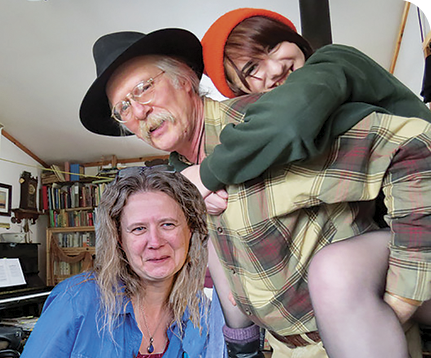
I feel like a kind, gentle way to begin this month’s column would be to remind all of you that Monday, February 18 is Family Day, a provincial statutory holiday. There. Now doesn’t that feel like a warm hug?
I’ve also given some thought to Groundhog Day, which is on February 2, and I say we raise the stakes. Here’s my pitch: If the groundhog — and all Canadians would have to agree on one furry soothsayer — does not see its shadow, forecasting an early spring, then, well, that’s clearly its own reward; and well done groundhog! However, if the groundhog sees its shadow, predicting six more weeks of cold, bleak, blizzardy winter, then we all get the day off. I feel quite strongly about this. Just imagine the (possible) jubilation!
Aside from keeping warm and cheering on the groundhog, there are some fun and interesting things to do in Perth in February, and maybe you’ll take a shine to a few of them.
You can munch on some hot buttery popcorn and take in two Oscar-class movies at the Full Circle Theatre this month, as Film Night International presents Patients and The Wife. Patients, a story about hope, friendship and enduring serious physical injuries and handicaps, is a French film with English subtitles starring Pablo Pauly. It’s playing on February 6 at 2pm and 7pm. The Wife, starring Glenn Close (who won the Golden Globe for this performance) and Jonathan Pryce, is based on Meg Wolitzer’s excellent book and explores the many intricacies of a forty-year marriage. By all accounts, Close owns this movie, and it’s an extraordinary and deeply thoughtful film. It’s playing on February 20 at 2pm and 7pm. Tickets are $20. Please arrive fifteen minutes early to guarantee you get a seat.
With the frigid temps and short days, February is ordinarily a very good month to get involved in the community, to see family, friends, and neighbours, and to enjoy a nice hot meal together. St. James Church is hosting not one but two community dinners in February — one on the 9th, the other on the 23rd — and all are welcome for a delicious meal in the church’s hall. The dinners go from 4:30 to 6:30pm, and a goodwill offering is appreciated to defray the cost of the food.
Loppet. I had to look this up. It’s a noun, and according to <Wiktionary.org>, a loppet is “a large, long distance cross-country skiing event.” They’re right, it turns out, and the Tay Valley Ski Club has one planned for February 10 at Murphy’s Point Provincial Park. The first race, a 2.5 or 5km “cookie race,” begins at 10am, followed by the classic 10km or 20km race at 11am. Though I’m unsure if there will be cookies on the menu, a hearty lunch will be served after each race, and awards will be presented at 1:30pm. If you would like to pre-register for the 2019 Tay Valley Loppet, please visit <tayvalleyskiclub.wordpress.com> or email Robert at <TVCCS.coaching@gmail.com>.
In any given month, people would scratch their heads if there wasn’t a play to attend in Perth. Thankfully, there are two in February! From February 21 to March 3, the Studio Theatre is presenting Alone Together Again — a play about a very crowded empty nest. You can find more information about this show on page 12 of this issue. Nearby, Barndoor Productions presents The Maltese Falcon at the Full Circle Theatre. The play, billed as “the classic hard-boiled detective story of all time, in a brand-new original stage adaption,” runs from February 15 to March 2. Reserved tickets are $20 (cash only), or you can pay $22 at the door. Please visit <barndoorproductions.ca> for matinée and evening showtimes, or to reserve tickets.
You can kick off your Family Day celebrations early on Saturday, February 16, as Perth Tourism hosts its annual Fire & Ice event at the Crystal Palace. This is a wonderful family event, featuring food, a bonfire and fireworks, but there’s also a portion of the celebrations geared a little more for adults, including an evening dance with an ice bar featuring drinks from Top Shelf Distillery and Perth Brewery, live music by the Lucky B’s, and special winter-themed cocktails. For more information about tickets and family events during the day, please call Kathryn Jamieson at 267–1947.
If you or someone you’re close to is getting married this year, you might want to get tickets for L.O.V.E.’s 4th Annual Wedding Expo. The Expo will help them plan their big day, as they can talk to beauty experts, event planners, bakers, officiates, transportation services, florists, photographers and videographers. The Expo takes place on February 24 at Code’s Mill from 12–3pm. It’s a catered event, with wine tasting and craft brewery samples. Brides and grooms may attend for free; others are $10 at the door. For more information, please call 250–0417.
MERA’s Sunday Folk Series, featuring some of the most accomplished musicians in North America, continues in February when Tripod takes the stage at MERA Schoolhouse on February 24 at 2pm. This family of musicians — Terry Tufts, Kathryn Briggs, and their daughter Beth — will perform their own material as well as putting their unique spins on some cover songs. With Terry’s masterful guitar playing, Kathryn’s skill as a seasoned pianist and 16-year-old Beth’s bold and clarion voice, this is sure to be a stirring and unforgettable show. Tickets are $22 in advance and available at Tickets Please (11 Gore Street East), online at <ticketsplease.ca>, or by calling 485–6434. In March, the Sunday Folk Series welcomes world-traveled troubadour James Keelaghan. Juno award-winning singer-songwriter Oh Susanna wraps up the series in April.
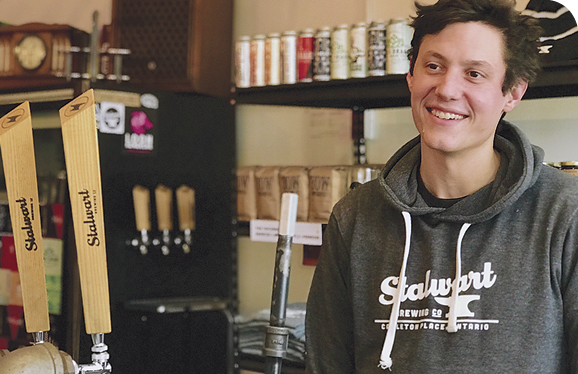
In the course of his perambulations around Humm territory, Weetabix has repeatedly encountered the phenomenon and products of “Craft Breweries”. Weetabix is not a serious beer drinker, but beer is one of the essential food groups and fresh beer is certainly easier to come by at this time of year than fresh field-grown vegetables. Blame “Febeery” on the Editor, but it fits, and since beer connoisseurs self-describe as beer lovers, the timing is doubly appropriate.
Beer is one of the oldest artifacts of civilization — evidence of brewing and beer culture date as far back as 10,000 years ago. There is evidence that other species enjoy fermented products too. Some animals (notably elephants) are seen to gorge on ripe and partially fermented fruits. In nature, uncontrolled fermentation is a pervasive phenomenon. Yeasts transform sugars into alcohol; it’s what they do. The transformation of starch into alcohol is a bit more complex, but over years of experimentation, people worked out processes by which grain crops could be transformed into a variety of beverages. Basically, any fermented product with alcohol content ranging between 3% and 12% could be termed a “beer”. There are fermented beverages with too little alcohol to be dignified as beer, and towards the upper end one enters the realm of wines.
Europe and North America have a long and rich tradition of grain-based beers, and beer has patron saints. “From man’s sweat and God’s love, beer came into the world,” said St. Arnulf of Metz, who is also credited with helping to end a plague by convincing people to drink beer in lieu of contaminated water. Weetabix will not be drawn into promoting the nutritional merits of beer; however, it is unquestionably better for one’s health than contaminated water. Beer is also nutritious and is the world’s most widely consumed mild intoxicant. It is, by its origin and nature, a social beverage and, when properly made, it is delicious. Recursion reoccurs and we are now, dear readers, back to the start of this article — Craft Breweries.
In 1516 Bavaria instituted a beer “purity law” that permitted beer to be made only with barley, hops and water. Being German, what was not permitted was forbidden, so it took a while before they got around to acknowledging yeast and permitting wheat. Fortunately or not (depending on one’s taste), other regulatory jurisdictions have been more catholic in their approach. With industrialization came mass production and mass marketing. The result was regression to the mean, otherwise known as bland, tasteless, undifferentiated but cheap beer.
Manufacturing beer is straightforward; the hard work is done by yeasts, and if they are properly cared for and fed, the result is reliable. Water quality, process control and good sanitary practices are important. Basic beer lends itself to mass production and marketing. From over four thousand breweries in the USA in the late nineteenth century, fewer than 70 operating breweries survived by the late twentieth century. Many of them existed solely due to shipping economics. The product was (according to Michael Jackson of beerhunter.com) “pale lager beers vaguely of the pilsener style but lighter in body, notably lacking hop character, and generally bland in palate. They do not all taste exactly the same but the differences between them are often of minor consequence.” And then… a miracle occurred. Forget the famous tea party, this was the real American Revolution. By 2018 the number of breweries had climbed past 7,000.
This is an extraordinary example of entrepreneurial activity enabled by high technology. Market hegemony disintegrated. And yes, dear readers, this IS a high-tech story since brewing is both a craft and a process. Microelectronics (sensors integrated into control systems) is the unsung hero of the story of microbrewing, since it has freed beer entrepreneurs from drudgery and uncertainty. Now free to experiment with taste, microbrewing has blossomed, and you, happy readers, can sample the fruits of this efflorescence. You also might think about the role of beer in your local economy since small craft breweries are labour-intensive. According to the Brewers Association, craft brewer sales in 2017 exceeded 12 percent of the US market by volume — certainly more than a drop in the proverbial bucket.
Diligently pursuing the general mission, Weetabix discovered that there are several craft breweries in theHumm’s coverage area. Time and requirements of safe winter motoring combined to limit his investigations so herewith, A Tale of Two Breweries:
Stalwart <stalwartbrewing.ca> is as Stalwart does: The three founders (Adam, Ed and Nathan) all liked experimenting with flavour and shared experience in the retail/food service sector. What started as a hobby became a lifestyle business and after a 2-year gestation (punctuated by lots of form-filling and working with trades), they opened the brewery in downtown Carleton Place. As described by Adam, it is a friendly fun place to meet, and Stalwart offers a distinctive selection of styles and flavours — including a chocolate double porter made with cocoa nibs from Hummingbird Chocolate!
Crooked Mile is located in Almonte <crookedmile.ca>. Founded by a husband and wife team, this brewery pays homage to the great local beer tradition of the UK. Nick and Vicki Pruiksma decided that they liked both the beers and the local pub lifestyle, so what could be more logical than… Well, actually it began with a trip in 2006/7 and a lot of learning about how to manage the process in order to make products that are distinctly evocative of their origins. The brewery, located in a mall at the edge of town, has space where one can linger over a glass, and Nick hopes it will develop into a local gathering place as well as his main retail outlet. Their slogan and advice is “Meander, Explore, Discover”. Weetabix recommends you do exactly that to thaw the chill of Febeery.
Everyone is invited to attend Evensong at St. James the Apostle Anglican Church in Perth on Sunday February 17 at 4pm. There will be a prelude at 3:45pm by guest organist Damien Macedo, who will also play a postlude. The service follows the Book of Common Prayer and the setting for the canticles is The Fauxbourdon by Thomas Morley (1557–1602). The Preces and Responses are by William Smith (1603–45).
The anthem is a modern setting (2017) of What a Friend We Have in Jesus by David Simon of Toronto for the Chapel Choir of the Episcopal Church at Yale University. “It is written in a very pleasing light modern style,” explains St. James’ Music Director Peter Woodwork, “which is sure to bring smiles to choristers and congregation alike, especially when we all join in singing the final verse!”
After graduating from St. Michael’s Choir School in Toronto in 2011, Damien Macedo studied at the University of Toronto while also studying organ and serving as a Choral Scholar at Trinity College. After graduating with a B.A. in English, Classics and Music, he was granted a choral scholarship at Wells Cathedral in Somerset, England, where he was also Assistant Organist at St. Cuthbert’s Church, a friendly parish lying within the shadow of the great cathedral. During his time in England, Damien was able to work as a freelance singer and organist across Europe. He is now the Organ Scholar at St. Andrew’s Presbyterian Church in Kingston and is still learning — he was recently awarded the Lillian Forsythe Scholarship to study liturgical music.
There will be another opportunity to hear Damien in Perth when he is a countertenor soloist in the upcoming performance of Handel’s Messiah by the combined choirs of St. Paul’s United Church and St. James (and friends) at St. Paul’s. This will take place on Sunday, April 28 at 7:30pm.
There will be another Evensong at St. James on Sunday, March 17 at 4pm, with a prelude at 3:45 of Lenten music sung by the Choir from the balcony. St. James’ Church is located on the corner of Drummond and Harvey Streets in Perth. For more information, contact the church office at 267–1163 or email <stjamesperth@gmail.com>.
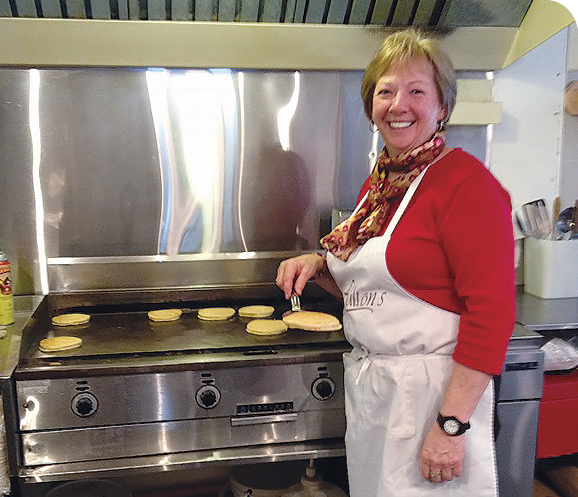
Fulton’s Pancake House & Sugar Bush is very excited to be celebrating Fifty Flippin’ Years in the Pancake House! The family has been in maple syrup production for more than 150 years. Fourth- and fifth-generation owners are busy at the helm and sixth-generation grandchildren are making a contribution to production, customer service and quality control. Fulton’s is open for ten weeks from Family Day weekend through Easter weekend.
Fulton’s invites current and former staff alumni from the last 50 years, together with their families, to join them on Sunday, February 17 for a special gathering. Starting at 3pm the property will be closed to the public and open for staff alumni to celebrate, reconnect, reminisce and enjoy a pancake meal, sleigh ride and activities on the Heritage Maple Path. If you are Fulton’s staff alumni and not currently on the invite list, please contact them today at <marketing@fultons.ca> with your contact information and share the event details with former co-workers.
To share their appreciation with the public, Fulton’s is offering 2-for-1 meals in the Pancake House on opening day, February 16. Pull on your warm waterproof boots and some layers and enjoy a true Canadian tradition at Fulton’s Pancake House & Sugar Bush.
Fulton’s is open daily from February 16 to April 22, weekdays from 9am to 3pm and weekends from 8am to 3pm. For more information, visit <fultons.ca>.
Owner Shirley Deugo invites everyone to celebrate this milestone atFulton’s Pancake House& Sugar Bush!
The Carleton Place and Beckwith Historical Society is getting ready to host their 7th annual fundraising Heritage Dinner. To kick off the Carleton Place 200th celebrations in style, they are presenting “In Rhythm with Our Roots”. It’s a night to gather together for a meal, have fun, and celebrate history.
Master of Ceremonies Linda Seccaspina, together with members of the Mississippi Mudds, will guide everyone on a musical journey through time, recalling local historic events as seen from the Mississippi River’s point of view. That river has seen a lot in 200 years!
In Rhythm with Our Roots takes place on Wednesday, February 13 at the historic Carleton Place Town Hall Auditorium. Doors open at 5:30 with cocktails from 6–7pm, followed by a roast beef buffet dinner prepared by Leatherworks Catering.
Along with historical displays there will be a silent auction featuring fabulous Valentine-themed items. This is a great opportunity to get your sweetheart something unique. Look for door prizes too!
This event is the Historical Society’s major annual fundraiser, raising much-needed funds to continue the work they do collecting, safeguarding and sharing local history. All funds will assist in the Society’s operation of the Carleton Place and Beckwith Heritage Museum. Since 1988 the Museum has been the town’s main trustee of local history. As a non-profit organization, they rely on the community’s generous support to maintain their work, especially as they embark on the community’s milestone 200th year.
Plus, it’s a fun time! Tickets are $50 per person and may be purchased by cash at the Museum or by e-transfer to <cpbmuseum@outlook.com>. Tax receipts will be issued and available for pickup at the door.
Donations to the Silent Auction table are welcomed! Please contact Carol Millar at 253–7013 or <cpbmuseum@outlook.com> to donate.

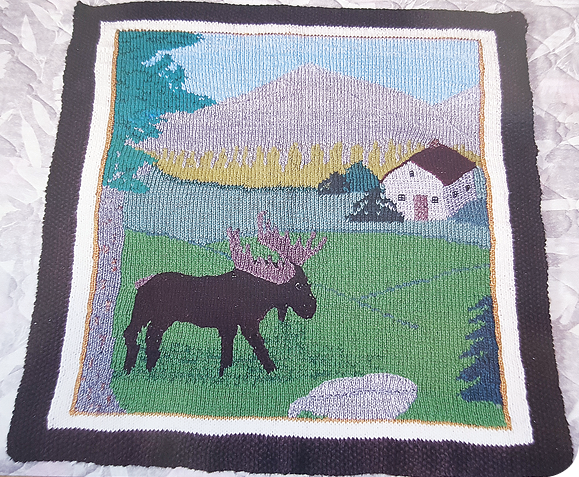
Mrs. Wilma Winton has spent her life quietly sharing her significant talent with others. From the warmth of her home at the end of a winding cottage road on Rideau Lake, Wilma has knit hundreds of items, giving them to people young and old during times of celebration and times when they could use some extra comfort. Wilma’s generosity is inspiring, and so too is the skill with which she knits. The intricately detailed, often personalized blankets she creates are obvious examples of her skill and creativity.
The blankets are not knit from purchased patterns — she designs each one, imaging scenes which she plots on knitting graph paper before making her first stitch. In fact, Wilma has knit a few complicated blanket scenes entirely from rough sketches, without even creating patterns first. As any knitter will tell you, it takes impressive skill to be able to do that! One such blanket depicts a girl picking apples with a wheelbarrow full of apples in the foreground, and a barn and pumpkin patch across the fields in the background. Wilma often accentuates certain details of her blankets by hand-stitching overtop of the knitting, which creates a sense of depth. She does not purchase yarn specifically for each project, but innovatively incorporates the yarn that she has on hand into her designs. Wilma credits family and friends with supporting her creativity by sourcing yarn at reasonable prices from local yard sales, and by sending her yarn they are no longer using.
Wilma was born 91 years ago and raised near Westport Ontario. She learned the basics of knitting from her mother. At the age of 17, while taking an advanced year of schooling in Toronto, she began to knit baby clothes for her sisters’ babies to pass the time while she was away from home. Returning to the area in 1948, Wilma took a job teaching at Elmgrove School on Rideau Lake Road. It was during this time that she met her future husband Ned. The couple were married and moved into a home on the Winton family property, where they would go on to farm, raise three sons, and rent out cottages. Wilma was busy, but found time to knit for her family and friends.
With her kind, open and welcoming demeanor, Wilma has helped to create a feeling of community amongst the neighbours and cottagers who share the shoreline near her home. Wilma has developed lasting relationships with the cottagers who have been visiting every summer for decades, and has knit sweaters for those cottagers and their friends who live as far away as Iqaluit and California.
It was after Ned’s death in 2007 that Wilma began to knit more seriously. She found that she had more time to volunteer and wanted to use it for good: “I enjoy doing things for other people — and I have a theory that you can’t worry and knit at the same time, or you’ll miss a stitch”. So with the connection of a neighbour who worked at Broadview Retirement Lodge & Nursing Centre in Smiths Falls, she began knitting lap blankets and shawls for residents living in the home. Wilma went on to knit over sixty lap blankets and over sixty shawls for the residents of Broadview, and has never stopped knitting. She has since knit for about nine other nursing homes located between Ottawa and Kingston. Wilma often incorporates natural scenes such as a spring meadow or sailboats on the water into the designs of these blankets. She has also knit teddy bears and baby blankets for children at Roger Neilson House in Ottawa, as well as shawls and winter accessories for the Lanark County Angel Tree for Seniors Program.
Every new baby in the family and neighbourhood receives a personalized baby blanket from Wilma, who has knit fifty such blankets over the past few years. Each is a beautiful keepsake for the child and their family with a design that incorporates the family’s lifestyle or heritage. One of these blankets was for the daughter of her son’s friends who had recently moved to Canada from China. The blanket depicts the little girl’s name and date of birth, important Chinese characters, a Panda eating bamboo, balloons, and the Canadian, French and Chinese flags stylized to look like blocks, to represent her heritage. Another is emblazoned with the logo of a family’s favourite soccer team (Manchester United). Wilma has knit custom blankets of all sizes to mark her loved one’s milestones, such as vacations and participation in athletics, hobbies and careers. One of these blankets depicts three air force planes flying in formation along with the name of the flying group the recipient belonged to.
Wilma’s approach to knitting shows her sense of wisdom. She doesn’t worry about making a mistake, saying “If I make a mistake I can always rip out the stitches and start over. That is something that you can’t always do in life. If you fix the mistake early it goes a lot better than if you wait… that goes for knitting and life in general.”
Wilma gives all of her creations freely, along with a hand-written tag fastened with ribbon which reads; “Knit with Love, Wilma. And God loves you too”. Wilma says: “I only write my first name, but I like to know that I have made a connection with the person, so that they will know someone cares.” Wilma holds a special place in the hearts of her loved ones and in her community, and is someone from whose example we can all learn.

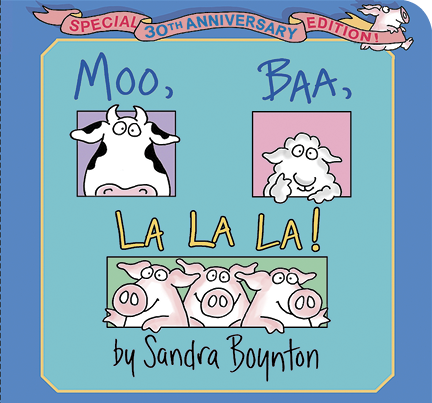
One of my favourite sounds to hear in the library is the laughing or babbling of babies enjoying Baby Time. Some people may wonder why you would take your baby to the public library. After all, they are too young to understand stories or select their own books, aren’t they?
There are many benefits to introducing your baby to the library. Since learning to read is important to your child’s success later in life, teaching your baby that the library is a fun place to visit is a good start. All of the libraries in Lanark County offer a special Baby Time (check their websites for times and dates). What happens during Baby Time? It is a time for parent and baby to share songs, rhymes and stories. Sharing the rhymes you learn during the program at home creates a sense of security for your baby. And the more face-to-face time you have with your little one strengthens that important parent/child bond. You may also learn something new that you can try at home with your baby. It is also a good opportunity to meet other parents with babies and share their experiences.
By starting to take your children to the library at such a young age, you will be teaching them how a library works and making them feel comfortable in it. By visiting the library every few weeks (or more frequently!), you are instilling good habits at a young age. We are also lucky living in a more rural area because many children will come to know the people working in the library and develop a rapport with them. How many people remember visiting the library as a child and having the librarian tell them that they have a book set aside just for them?
Here are some tips to introduce your baby to the library:
Keep your first few visits to the library short.
Choose a time of day when your baby is likely to be awake (and happy).
Choose a few board books and sit down with your baby in your lap. Read a few books. Don’t worry if the baby appears to not be paying any attention to the story because the more you talk and read to your baby, the more sounds and words they learn as they get ready to talk.
Talk to your baby about what you are seeing in the library. There will be other children, bright pictures and toys to look at.
Select a few board books to take home to read to your baby.
Join your library’s Baby Time group.
And most importantly — don’t worry if your baby cries! Libraries love babies!
Suggested Books for Babies
Pat the Bunny by Dorothy Kunhardt (1940)
Ten Little Fingers and Ten Little Toes by Mem Fox (very popular at Baby Time)
Flip, Flap, Fly by Phyllis Root (another big hit)
Dear Zoo by Rod Campbell (lift-the-flap)
Hey Diddle Diddle illustrated by Hazel Quintanilla (brand new book with gorgeous illustrations)
Marc Brown’s Playtime Rhymes
And of course anything by Sandra Boynton
Come out for a great Green brunch at the Maberly Hall on Sunday, February 17! For only $10 you’ll learn lots, eat some terrific food and have an opportunity to support the Green Party. Children are welcome and get in for free.
Guest speaker Christopher Weissflog will speak on the topic of “Affordable, Efficient, Zero Emission Housing”. Chris is passionate about helping people reduce carbon emissions. For eleven years his company has operated regionally in the renewable energy and high-performance building sectors. He will address sustainable energy policy for high performance homes and the effect that government policies have had on the rise and then the collapse of consumer demand on the industry, with the resulting implications.
After 21 years of military service, Chris founded EcoGen Energy in 2007. He is currently focused on providing custom, sustainable buildings and energy systems solutions by designing and building low- to zero-carbon homes. His company uses high-performance passive building design, efficient HVAC system design, progressive use of photovoltaics (grid-tied, grid-interactive and off-grid), solar thermal, building-integrated thermal energy storage, earth energy systems and a range of techniques to further improve efficiency.
This event starts at 11am at 180 Maberly-Elphin Road (Hwy 36). Donations of up to $400 are tax rebated 75%. For more information, please email <support@greenparty.ca>.
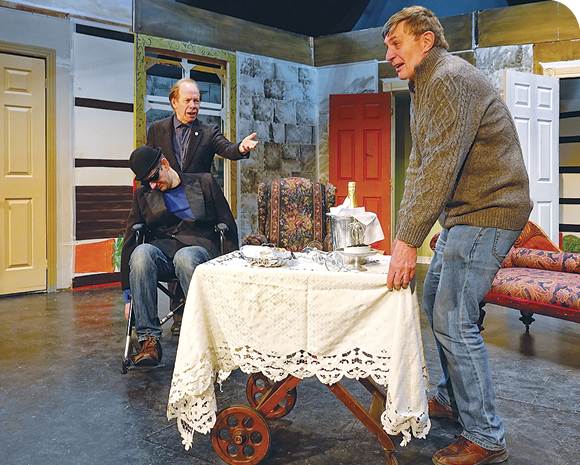
If you aren’t a winter person, February can be the dreariest of months. The snow, cold and bitter wind seems to be have been here forever, feeling like it will never be done. You need a pick-me-up! A time to forget about it all and just submerse yourself in a whole lot of nonsense for an evening or afternoon. That’s where the Station Theatre comes in. Their traditional British farce — Out of Order — by the master of farce, Ray Cooney, is sure to brighten any February drearies!
Director Lynda Daniluk has assembled an accomplished team of actors, with some familiar faces and some new ones, all of whom are ready to help make you laugh until your belly hurts. Farce is an interesting art form. Dictionary.com describes it as “a light, humorous play in which the plot depends upon a skillfully exploited situation rather than upon the development of character”. But more than that, it leans towards the absurd, in a very subtle way. Every character in a farce does over-the-top, ridiculous things. However, from their point of view, what they are doing is totally logical and normal — and that is what makes it so funny to the audience. Watching a character deal with catastrophe (usually of their own making) while taking themselves far too seriously is very humorous indeed.
Out of Order won the Olivier award for Best Comedy in 1991. It’s set in the Westminster Hotel in London and follows Richard Willey (Jamie Schoular), a junior government minister attempting to have a dalliance with Jane Worthington (Nicki Hayes) instead of attending the Parliamentary Debates, where he should be. He uses his Private Secretary George Pigden (Robert DelGrande) as a cover, but as complications arise George shows up at the hotel room… and causes new complications. There is a window leading to a balcony which becomes a very convenient “escape route”; however, the window tends to malfunction at the most inopportune times. Add in an exasperated manager (Rob Glas), a wily waiter (Michael Adams) who is ready to add to his personal wealth at every opportunity, a frustrated maid (Jen Hart) who doesn’t speak English all that well, Richard’s wife Pamela (Mandi Reed), Jane’s husband Ronnie (Noel White), George’s mother’s nurse Gladys (Katharine Coleman), as well as a body (Gary Welsh), and — as you can imagine — what ensues is confusion, surprises, desperation and trials — especially for Richard and George.
There are performances on February 22, 23, 28, March 1 and 2 at 7:30pm, with Sunday matinées on February 24 and March 3 at 2pm. Tickets are $20 for adults, $10 for students, and can be purchased with cash at Special Greetings (8 Russell Street in Smiths Falls), online or by phone (283–0300) with credit card. If tickets are still available, they can be purchased a half-hour before showtime at the door, cash only.
Visit <smithsfallstheatre.com> for more details. Don’t forget, if you are a regular theatre patron, the 2019 season voucher packs are still on sale for the duration of this play. For $99 you get six vouchers that can be used towards any six plays in 2019. That’s like one show for free! Use them all for one show, or one for each. It’s a great way to make sure you see all the Station Theatre has to offer. Voucher packs can still be picked up at Special Greetings (cash/cheque), at the theatre (9am-12pm weekdays), or during the performances of this show. Once this show is over the vouchers will no longer be on sale, so don’t miss out.
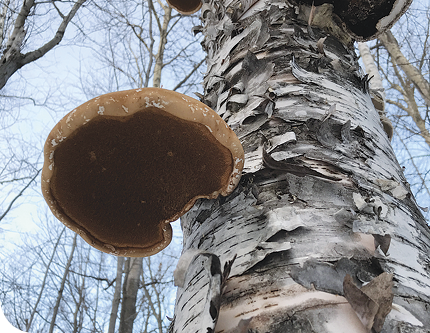
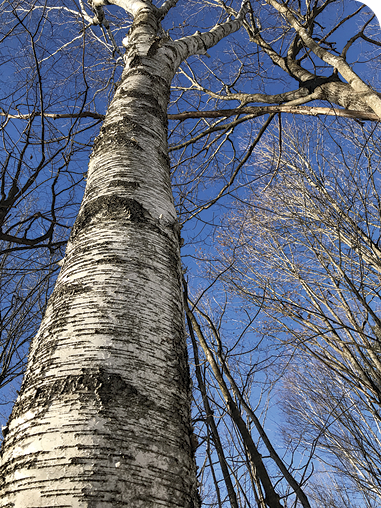
On New Year’s Day I went for a bush walk on the farm with some friends. Along the way I passed a mid-sized, dying birch that had a mushroom growing on its trunk. I had never noticed a mushroom like this before (as yet, I know little about fungi). It had a camel-coloured, leathery top and a distinct, rolled-under edge. No one I was with seemed to know what it was either. I took a picture with my phone and upon returning to the house sat down with a couple of field guides and my computer to try to positively identify it. Before long I’d discovered that it was a birch polypore — one of our forests’ finest medicines. I was captivated, at first by the mushroom, but increasingly by the tree it grew on. And so, as it turns out, the past month wound up being an exploration of one of the most recognizable, elegant, and luminous trees in our northern forests – Betula papyrifera, or paper birch.
Many closely related species of the genus Betula, or birch as it is commonly known, grow abundantly across the northern hemisphere. This tree is known as a “pioneer” species, and was among the first to re-establish when the last Ice Age ended around 12,000 years ago. Paper birch is shade intolerant, so it tends to be found on the edges of forests, in clearings or on its own. It is one of the first trees to re-generate after a fire, or to colonize open areas where conditions suit. Once established, birch creates the nursery ground for seedlings of other genera like oak, pine and maple that require shade in infancy. In time, these seedlings mature, begin to dominate the canopy, and overshadow their birch nurse-maids as the birch come to the end of their relatively short life-cycles.
In our area, B. papyrifera is likely to be the species familiar to most people. She is admired for her graceful, bright presence — especially eye-catching in our stark winter landscape. In addition to her beauty, paper birch has significantly impacted cultures throughout human history in other ways. For many Indigenous Peoples from the Great Lakes region and further east — where rivers served as the arteries for transportation (prior to roads), canoes were a primary means of travel. Birchbark provided a strong, lightweight, water-resistant and abundant building material for those canoes.
Birchbark’s rot-resistance and antifungal qualities made it equally suited for building wigwams, and in Nordic areas even provided a substructure for sod roofs. The bark’s smooth papery qualities made it a fine material from which to fashion a long list of objects including kettles, torches, sleds, clothing, beautiful containers, moose calls, musical instruments and even coffins.
Perhaps the most potent birchbark objects I have recently learned about is the Mide-wiigwaas — a type of birchbark scroll used by the Great Lakes Ojibwa Peoples for keeping records for instructional and guidance purposes. These scrolls enabled the transmission of esoteric ideas, songs, ritual and healing practices and would have been used by lineages of healers. Archeological records indicate that such scrolls have been used for at least 400 years. To me, there is a beautiful symmetry between these bark scrolls that have contained and protected important traditional knowledge, and living birchbark that contains and protects the heart of a birch tree itself. In both cases, the bark holds powerful wisdom and energy within.
Reverence for birch is widespread across the global north and, it would seem, stems from the centuries-long relationship humans have had with this tree, in both its material and healing properties. Folklore follows from such relationships, and in stories and ritual birch is variously associated with protection, magic, returning light, new beginnings, purification and feminine energy.
Birch has important medicines to offer. Her sap in spring is a fine healing tonic — still very popular across Russia — that can also be fermented into beer. Inner bark can be used as flour in bread making; astringent leaves, buds and twigs (which taste like wintergreen) can be used in tea to strengthen the kidneys and help heal urinary tract infections. Birchbark has antiseptic properties as well and can be prepared as a salve, or, when soaked, as poultice for skin ailments. (I will be posting a recipe for birch salve on my Instagram page this month.)
But it is birch’s Latin name Betula that presents a clue to another exciting protective and healing component the tree contains. Betulin is oft-touted as the reason for birch’s white bark, whose light-reflecting colour helps protect the tree from sunscald, and from heating up too much and cracking in winter’s freeze-thaw cycles. Betulin, a triterpene compound, is a powerful antioxidant, anti-inflammatory and antiviral found in the bark and sap that has shown promise in the treatment of some cancers including melanoma. And as it happens, two significant medicinal mushrooms, birch polypore (Fomitopsis betulina) and chaga (Inonotus obliquus), are most commonly found on birch. Both mushrooms concentrate betulin into its more bioavailable form betulinic acid, and, no surprise, they have long been used in folk medicine as a treatment for cancer.
To me there is something deeply meaningful about how layers of bark unravel, peeling themselves away from the trunk like a constant letting go. In The Essence of Healing, Steve Johnson says paper birch (flower essence) is indicated for when one is “unable to connect with deeper levels of insight regarding life purpose” and that paper birch “encourages a gentle unveiling of the true and essential self that is present within”.
The snow is coming down in fat flakes outside my window now as I finish writing. A curtain of Betula papyrifera stands on the other side of the pond next to the house. I thank them for the beauty and medicines they offer in both their youthful and aged forms, their ecological role here, and the mysteries they quietly hold. It’s difficult not to be dazzled.
For more portraits and information on plants featured in this column, follow the Pine Oak & Yarrow Instagram page at <instagram.com/pineoakyarrow>.

Need a break from winter and everyday life? Then come on a canoe trip into Algonquin Park wilderness with Bill Kennedy and his five-year-old daughter Suzanne. Described as “a charming read” by author Roy MacGregor, Putting the Outside Inside Kids is a celebration of the magical role that nature can play in the lives of children — fostering self-confidence, curiosity, physical activity and a spirit of adventure.
You will be carried along with heart-stopping bear stories, snapshots of history before Algonquin was a park, practical tips on canoe tripping, personal reflections on experiencing nature, and thoughtful quotations from many people through history who believed in the empowering gift nature offers us, if only we take the time to see it.
“I often pictured parents and grandparents of children and teenagers as my readers while I was writing,” says Kennedy. “If they already love the outdoors, this book will validate what they know. If they are not keen on the outdoors, it will give them something to think about, and hopefully provide the spark that will change their minds. In today’s world of screen time and virtual reality, nature offers another kind of electricity to plug into.”
Kennedy lives and writes in Belleville, Ontario. He teamed up with his cousin and freelance editor Marion Kennedy of Richmond, Ontario, and Tellwell of Victoria, B.C., to self-publish Putting the Outside Inside Kids.
IndieReader has given Putting the Outside Inside Kids a book review rating of 4.7 out of 5 stars, and it can be found at the Perth Library, The Book Nook in Perth, and World of Maps in Ottawa. It can also be ordered online through Kennedy’s website: <billkennedyauthor.ca>.

Our relationship with plants is a complicated one.
On the one hand we are hugely concerned about the negative health effects of certain plants such as wild parsnip. Like giant hogweed and other members of the carrot family, it produces sap containing chemicals that can cause human skin to react to sunlight, resulting in intense burns, rashes or blisters. Caution is indeed in order!
On the other hand, we have developed a very blasé relationship with other common garden plants that can have much more severe effects. Lily-of-the-valley contains a toxin that can lead to coma and death — even the water you put the flowers in can intensify contractions of the heart. Narcissus can cause paralysis of the heart — even the scent in a closed room can cause a headache. Swallowing any part of the hydrangea plant is akin to taking a cyanide pill. And so it goes with larkspur, poinsettia, mistletoe, rhododendron, and on and on. One has only to read British murder mysteries to learn how to create mayhem with common garden plants.
Why the difference in levels of concern? I, for one, tend to blame the media with its bias towards sensationalism — perhaps not fake news, but certainly unbalanced!
Unless one plans to spend the rest of their days avoiding plants, I suggest that a more sensible approach is to learn more about plants and become comfortable in the garden. This is, of course, a segue into the fascinating phenomena of Seedy Saturdays (and Sundays). These grass-roots events are locally organized — the Canadian not-for-profit organization Seeds of Diversity has a loose organizational role, providing some guidance and some publicity. However, they are a series of separate events that have sprung up across the country, each individually organized under the themes of encouraging the use of open-pollinated and heritage seeds, enabling a local seed exchange, and educating the public about seed saving and environmentally responsible gardening practices.
Almonte’s Seedy Saturday
The 4th annual Almonte Seedy Saturday will soon be here! Once again there will be guest speakers all day on a wide variety of topics, more than forty artisan vendors and not-for-profits, door prizes, and plenty of seed swapping. Seedy Saturday comes to the Almonte Civitan Club (500 Almonte Road) on Saturday, February 9 from 9am to 3pm. Johvi Leeck, a young local entrepreneur and owner of gardening venture “Beyond the Garden Gate” (along with a bit of help from mom and dad) is bringing Seedy Saturday to town for its fourth year. The inaugural year of 2016 was a tremendous success and Johvi continues to build on that success.Admission is $2 per person at the door (or free with your ad in the bottom corner of this page!), kids under 5 are free.
All of our local gardening groups will be well represented — the Neighbourhood Tomato Community Gardening Program, Almonte & District Horticultural Society, the Canadian Organic Growers, the MMPL Seed Library, Seeds of Diversity and the Lanark County Master Gardeners are all enthusiastic supporters of Seedy Saturday. For me, one of the most important aspects is the opportunity for networking with many gardening groups to learn of their latest accomplishments and their plans for 2019.
Gardeners will be able to exchange information (and of course to commiserate about the wild challenges of gardening in 2018) and to buy, sell or trade interesting and unusual heritage varieties of vegetable, fruit, herb, flower, wild and native Ontario seeds.
For many years I attended and spoke at the larger Seedy Saturday event at Britannia Park in Ottawa. But by my reckoning this overwhelmingly successful gardening event became far too successful for my tastes! Before the doors opened there was a line-up of people and by afternoon it was so crowded that it was almost impossible to move! So I was extremely delighted when Seedy Saturday came to Almonte.
This is another amazingly successful Almonte event and a terrific opportunity for gardeners from the area to network, for local producers to showcase their wares, and for learning. This is a great opportunity to support local small businesses — these folks are not in for the “big bucks” but because they believe fervently in what they are doing. Seedy Saturdays’ grass-roots nature — low overhead, low admission fees, local talent, and volunteer energy — distinguishes them from expensive, commercially driven garden shows. Attendees are able to contribute, not just consume. In general, the region where the event is held dictates both the topics and speakers who naturally lend themselves to that area, so it truly is a local event.
For more details on the great network of Seedy Saturday (and Sunday) events taking place across the country, check out the Seeds of Diversity website <seeds.ca>. This year Seedy Saturday in Ottawa takes place March 2 at Britannia Park (Ron Kolbus Lakeside Centre). If you want to go a bit further afield Brockville is March 2, Kingston is March 9 and Pembroke is March 3.
These events are fantastic for the beginner gardener but are also very timely for the serious gardener who is venturing into starting their own seedlings under lights. While the time to start some seedlings indoors under lights is rapidly approaching, it is important to take a deep breath and slow down. Tomatoes should not be started until mid-March – otherwise they will become hopelessly lanky and out of control – you will not produce robust seedlings that are worthy of gracing your veggie patch. Peppers and eggplants can be started a couple of weeks earlier at the end of February. But there are a number of other vegetables that respond very well to a much longer growing period under lights – veggies that I have very successfully started in early February include parsley, onions, leeks, celery, celeriac, globe artichoke and cardoon. So now is a great time to get out and talk to experienced gardeners and check out the huge diversity of vegetable varieties that are available.
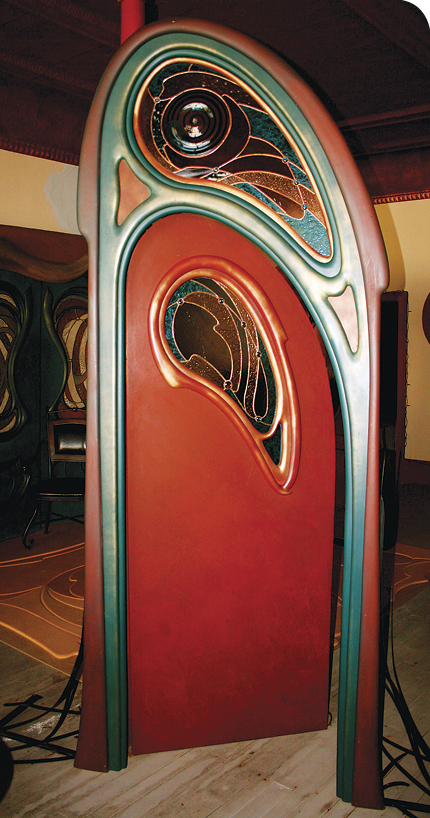
Looking to bring extra light into your winter? The Elgin Art Gallery invites everyone to the show opening of Otty Lake stained glass artist Gregori Robinson on February 9 from 2–5pm.
“Greg’s work is inspired by the past… his imaginings are fueled by the Art Nouveau and Arts & Crafts movement of the last century. It’s both head-turning and breathtaking, transporting those who see it to another time and place,” reports CTV’s Regional Contact.
Gregori says of his work: “I’m excited and passionate about Art Nouveau. It’s a time in history when art and architecture were one. So a stained-glass window wasn’t just put into a square frame and that was that. The work was designed to be part of the whole environment.”
Of his unusual and complex shapes, Robinson says: “what can make great creations interesting are basic and inexpensive materials. I used a common and simple construction product, MDF (medium-density fiberboard) to make the frames for my stained glass, a kind of an undiscovered miracle material to work with. You can do much more fluid and curving lines.”
Gregori’s work can be found in galleries, homes and institutions throughout Eastern Canada, the U.S, Mexico and Paris, including major private and public collections.
“A favorite installation was for architect Douglas Cardinal. We set the piece in his office window in such a way that the coloured light played across the model for the Native Cultural Centre in Ottawa. A beautiful effect,” says Robinson.
Elgin Art Gallery invites the public and all those interested in the arts, nouveau or otherwise, to the vernissage from 2–5pm on February 9. The Gallery is located above the Savoury and Sweet restaurant at 3 Main Street in Elgin, Ontario. The show runs from February 9 to April 21. For more information, please call 267–6794.